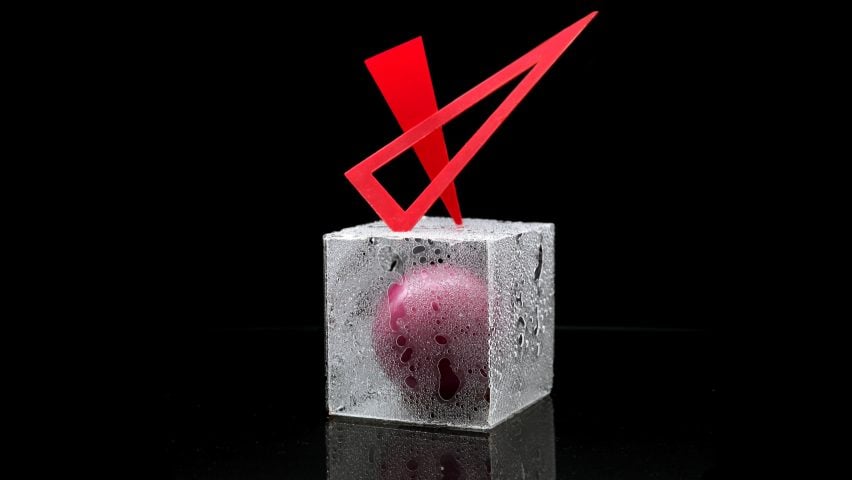These complex, geometric desserts are made by Ukrainian patisserie chef Dinara Kasko, who draws on her background in architecture in her cooking.
Kasko's desserts have architectural characteristics, which she achieves by using silicone moulds modelled with Autodesk's 3ds Max software. Combining this technique with precise piping, she can achieve clean lines and smooth surfaces.
Her background as an architect, designer and 3D visualiser has contributed to her unconventional approach to desserts.
"From the moment I got into patisserie I decided to try and add something new to it," said Kasko. "I realised that the appearance is as important as taste."
Many of the forms are achieved by silicone moulds she designs using 3ds Max. These are mass-produced and sold on Kasko's website, where she also shares her recipes.
"I use ideas and inspiration from modern architecture, art, nature and any other objects that surround us," Kasko told Dezeen.
One of Kasko's creations is Cake Bubbles – a dessert with layers of guava, mango, meringue and sponge, cocooned in a white chocolate bubble shell set in a silicone mould.
"The process began by making a few simple desserts using simple geometrical figures," said Kasko. "These cakes were developed to have a more aesthetic focus."
Geometric Desserts is another of Kasko's creations. The chocolate sponge cake, which is filled with mousse and passionfruit jelly, has a surface that looks like concrete.
"We can get very interesting objects and surfaces," said the chef. "Now I'm looking for new forms, tastes and I'm still studying patisserie."
New technology has introduced chefs and designers to alternative methods to cooking and baking. Royal College of Art student Kia Utzon-Frank designed a series of cakes disguised as polished stone, while Dutch culinary design studio Studio Appétit made a collection of bespoke chocolates to add to the experience of hotel guests.

